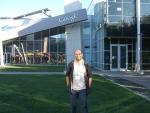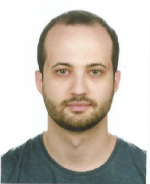2020
Displaying time series with R
The visualization of time series is intended to reveal changes of one or more quantitative variables through time, and to display the …
An introduction to web scraping: locating Spanish schools
Whenever a new paper is released using some type of scraped data, most of my peers in the social science community get baffled at how …
Graph Theory 101 with corruption cases in Spain
Data about all corruption cases in Spain can be modeled as a graph to unveil the networks of “friends” that are always …
2019
Herds of statistical models
Big datasets found in statistical practice often have a rich structure. Most traditional methods, including their modern counterparts, …
Automated testing with 'testthat' in practice
You test your code. We know you do. How else are you sure that your changes don’t break the program? But after you commit, you …
Spatial Data Analysis with INLA
This session will show how to fit mixed-effects models to spatial lattice data using the integrated nested Laplace approximation with …
Strange Attractors: an R experiment about maths, recursivity and creative coding
Iteration is a key feature of every programing language and mastering it will make your life easier. In this talk we will learn how to …
Mastering R presentations
Do you want to know how to make elegant and simple reproducible presentations? In this talk, we are going to explain how to do …
Getting from flat data a world of relationships to visualize with Gephi
Network analysis offers a perspective of the data that broadens and enriches any investigation. Many times we deal with data in which …
Simple yet elegant Object-Oriented programming in R with S3
The R language is peculiar in many ways, and its approach to object-oriented (OO) programming is just one of them. Indeed, base R …
An introduction to JupyterLab
JupyterLab can be viewed as the evolution of the Jupyter Notebooks, an open-source web application that allows combining interactive …
Starting with Flexdashboard
In this session, we are going to employ the
flexdashboard R package. Why? Because this is an easy way to make dashboards! We will begin …
Blogging with R
In this talk, we will build a simple blog using R-Markdown, Jekyll and GitHub pages. We will use the blogdown package for R that allows …
Creating elegant and informative data graphics with ggplot2
In this talk, we will learn to use ggplot2, an R-package to make nice and useful visualizations. The package is based on a powerful and …
Optimizing using AMPL & NEOS Server
The aim of this talk is to illustrate some basics about how to model and solve optimization problems using the AMPL language. In fact, …
An introduction to Stan with R
Stan is a probabilistic programming language for specifying statistical models. Stan provides full Bayesian inference for …
2018
LSTM with Keras & TensorFlow
The aim of this tutorial is to show the use of TensorFlow with KERAS for classification and prediction in Time Series Analysis. The …
Online resources for teaching
In this session I will try to show some utilities present in the web. One of them will help us to execute R code from the web, using an …
An introduction to Shiny II
This is our second session introducing Shiny, an R package that allows to develop interactive Apps in a familiar framework for regular …
Version control systems for researchers
The main goal of this session is to show how researchers can use a system control version like Git through GitHub in order to improve …
An introduction to Tensorflow
TensorFlow has been widely used for many applications in machine learning and deep learning. However, TensorFlow is more than that, it …
An introduction to Shiny as a teaching resource
The main goal of this session is to show a regular R user how to develop his/her own interactive (web) application without much effort. …
A brief introduction to parallel computing in Julia
In this session we will learn how to take advantage of a multi-core PC through the use of parallel computing in Julia. It is worth to …
An introduction to the Julia language
The first time you read about the Julia language, the idea that sticks in your mind is “A speed similar to C, with a simplicity …
Useful one-function R packages, big data solutions, and a message from Yoda
As the title reads, in this heterogeneous session we will see three topics of different interest. The first is a collection of three …
























